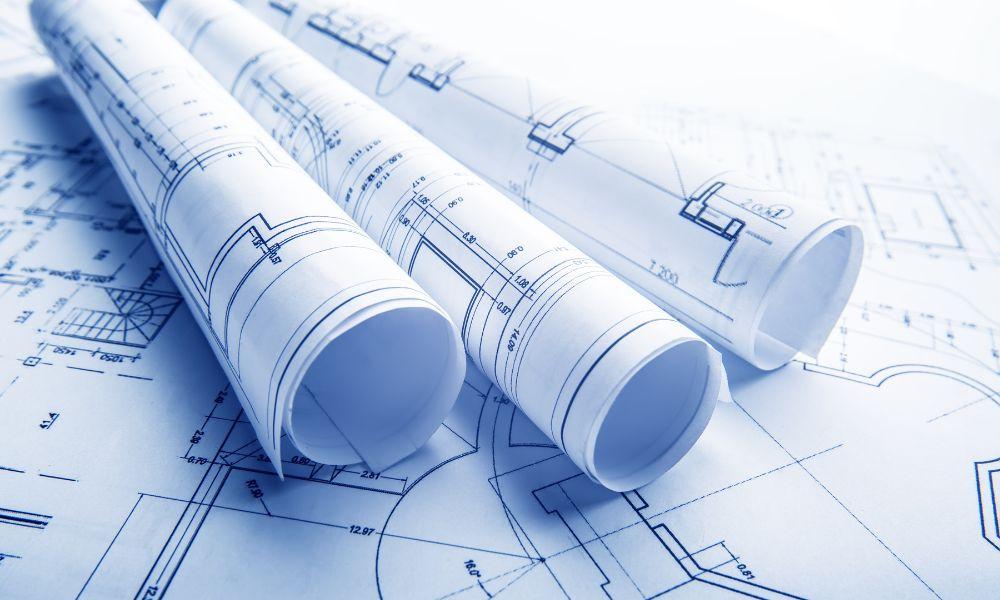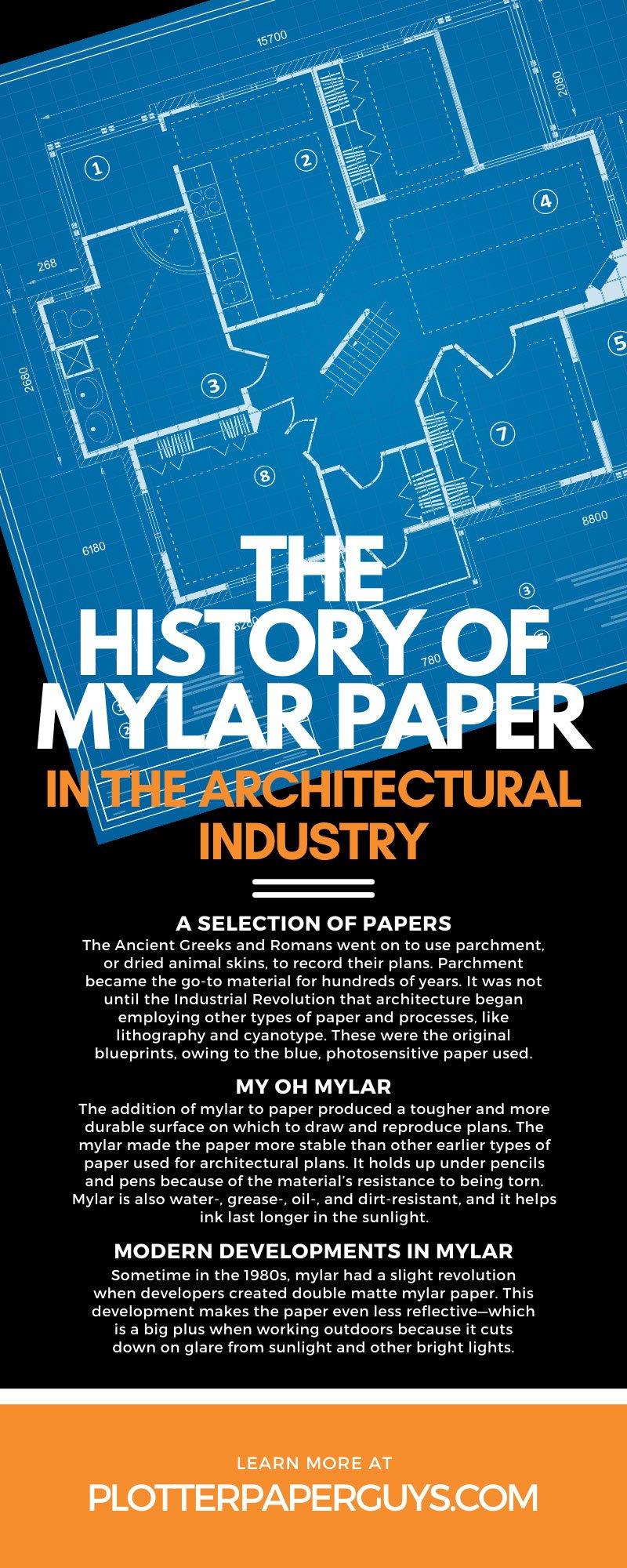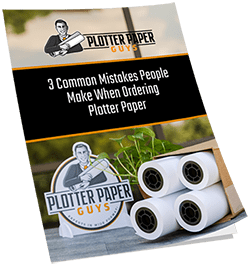Paper and the field of architecture have had a long and fruitful working relationship for hundreds of years. Through paper, architects can take the images from their heads, render them in two dimensions, and then share them with others to see their designs realized. Architects have recorded many kinds of architectural plans on many types of paper, but for the past 70 years or so, one paper has stood out: Mylar paper.
Mylar paper is not completely paper. It is a blend of paper with a polyester film called Biaxally-oriented polyethylene terephthalate (short version, BoPET). Mylar is a particular brand name for BoPET, which the DuPont Company first developed. Mylar resists tearing and holds up even under high temperatures. The material has multiple uses, but when architects combine it with paper it produces an incredible surface for them to draw or print on and preserve their dreams. Here is a brief accounting of the history of mylar paper in the architectural industry.
A Selection of Papers
The earliest architects were likely the first of our ancestors to leave their caves and design homes from reeds, wood, brick, and more. Cave paintings show early plans for large walled hunting traps designed and built some 9000 years ago. The Mesopotamians built their ziggurats and temples out of baked brick and based them on plans drafted in clay. It was not until the Egyptians came up with papyrus that architectural details were committed to paper, though these mostly recorded already existing buildings.
The Ancient Greeks and Romans went on to use parchment, or dried animal skins, to record their plans. Parchment became the go-to material for hundreds of years. It was not until the Industrial Revolution that architecture began employing other types of paper and processes, like lithography and cyanotype. These were the original blueprints, owing to the blue, photosensitive paper used. Using cyanotype was also a cheap way to reproduce plans. Eventually, diazo prints, or whiteprints, replaced the original blueprints, though blueprints remain a common nickname for all architectural plans. Sometime in the 1950s, Mylar paper was developed, and the architecture world took to it almost immediately.
My Oh Mylar
Mylar was not originally meant to be used in paper production. It was mostly used as insulation for NASA spacecraft, protecting the delicate instruments from the sun’s intense heat in space. Mylar has also turned up in food packaging, balloons, emergency blankets, and other applications. All these applications inspired scientists to implement the material in paper production. The addition of mylar to paper produced a tougher and more durable surface on which to draw and reproduce plans. The mylar made the paper more stable than other earlier types of paper used for architectural plans. It holds up under pencils and pens because of the material’s resistance to being torn. Mylar is also water-, grease-, oil-, and dirt-resistant, and it helps ink last longer in the sunlight. Mylar also makes it far easier to produce and reproduce plans for distribution and review and it was extremely dependable in the production of templates and stencils that can stand up under rough handling. Mylar paper is not just good for the short term. Architects realized that the plastic content meant that mylar paper would not change color or fade over time, and could, in fact, last hundreds of years in storage.
Modern Developments in Mylar
Sometime in the 1980s, mylar had a slight revolution when developers created double matte mylar paper. This development makes the paper even less reflective—which is a big plus when working outdoors because it cuts down on glare from sunlight and other bright lights. Mylar has also served another purpose by helping older blueprints on less durable paper survive through reproduction on or transference to mylar paper. While archivists do not always swear by mylar paper—sometimes it does not transfer the image well and the emulsion can smear—it still works well enough for the purpose of preservation.
Mylar in the ‘90s
Drawing up plans by hand using pencils, pen, and ink eventually made way for computer-assisted design (CAD), and mylar once again found itself well-suited for the evolution of the field of architecture. Architects can print CAD-created blueprints on mylar paper perfectly and swiftly, making the distribution and transportation of their plans easier and more efficient. While mylar paper can sometimes cost more, it pays for itself by remaining intact in storage and under harsh conditions. The versatility and durability of mylar paper have also carried over to other industries and occupations. Just like architects, engineers appreciate how well mylar paper prints out their plans while protecting them from destructive elemental and environmental factors. Mylar paper offers a long-lasting guide and proof for the purposes of record-keeping, patent applications, and sharing plans with others. This durability carries over to inventors, designers, artists (not just illustrators but sculptors as well), photographers, graphic design professionals, and those in charge of preserving documents. Mylar continues to remain useful into the 21st century, and more than likely, people will still be using and referring to documents printed on it well into the far-flung future!
The Future of Mylar
That is the gist of the history of mylar paper in the architectural industry (and a few other fields). Contact us today if you have questions about what mylar paper can do for you and your business. We can provide consultations on the right paper products and printers you can use to preserve information and images, improve sales, and otherwise protect and show off architectural and engineering sketches and plans. We offer everything from 4 mil double matte mylar to dual roll multi-function printing systems, to the ink and equipment you need to ensure your prints come out crisp, clean, and ready to share. Not sure what you need? We have the experience to review the issues you face and diagnose the proper printing “cure.” Call or otherwise contact us today. We look forward to hearing from and working with you, whether you work in architecture, a related field, or elsewhere!





